

Is America Ready for a Global Pandemic? Editor’s Note:The Atlantic is making vital coverage of the coronavirus available to all readers. Find the collection here. Image above: Workers at the University of Nebraska Medical Center’s biocontainment unit practicing procedural safety on a mannequin At 6 o’clock in the morning, shortly after the sun spills over the horizon, the city of Kikwit doesn’t so much wake up as ignite.
Loud music blares from car radios. Shops fly open along the main street. By late morning, I am away from the bustle, on a quiet, exposed hilltop some five miles down a pothole-ridden road. To hear more feature stories, see our full list or get the Audm iPhone app. Unnatural Disasters. Since 1961, we’ve been witnessing a slow-rolling cholera pandemic.

Unlike earlier ones, it began in Indonesia, not India, and moved across Asia and the Middle East. It reached Africa by 1971 and Italy by 1973. By 1991, it was in South America, where cholera had been eradicated a hundred years earlier. It killed at least three thousand people in Peru. Virus 101. Professor Kurt Krause, from the University of Otago, introduces us to viruses – what they are, how they invade our cells, what a coronavirus is and how repurposed drugs are being tested to see if they can be any use against the COVID-19 virus.
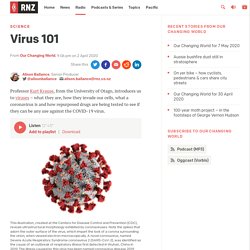
This illustration, created at the Centers for Disease Control and Prevention (CDC), reveals ultrastructural morphology exhibited by coronaviruses. Intro to viruses (article) Understanding HIV/AIDS. The HIV Life Cycle Last Reviewed: July 1, 2019 Key Points HIV gradually destroys the immune system by attacking and destroying a type of white blood cell called a CD4 cell.
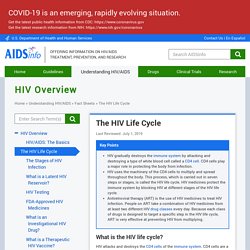
CD4 cells play a major role in protecting the body from infection. Animations – Science of HIV. Restriction factors act as one of our first lines of defense against viral invaders.
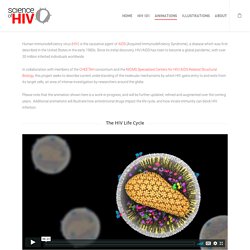
These proteins, which are produced by the host cell, can work to inhibit the replication of broad classes of viruses, including HIV. Different restriction factors can target different points of the HIV cell cycle, including entry, reverse transcription, and budding. However, HIV has evolved mechanisms to counter these host defenses. HIV/AIDS. The human immunodeficiency virus (HIV) targets the immune system and weakens people's defense against many infections and some types of cancer.
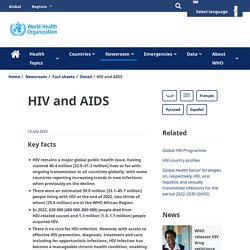
As the virus destroys and impairs the function of immune cells, infected individuals gradually become immunodeficient. Immune function is typically measured by CD4 cell count. Immunodeficiency results in increased susceptibility to a wide range of infections, cancers and other diseases that people with healthy immune systems can fight off. The most advanced stage of HIV infection is acquired immunodeficiency syndrome (AIDS), which can take many years to develop if not treated, depending on the individual.
AIDS is defined by the development of certain cancers, infections or other severe long term clinical manifestations. Signs and symptoms The symptoms of HIV vary depending on the stage of infection. Transmission It is important to note that people with HIV who are taking ART and are virally suppressed do not transmit HIV to their sexual partners. HIV Fact sheets. Influenza virus- Structure, Types, Life Cycle. Last edited and updated on: January 3, 2020 by Sagar Aryal Influenza commonly called a flue is a highly contagious viral infection of the respiratory tract mainly infects humans and animals.
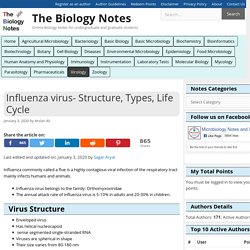
Influenza virus belongs to the family: OrthomyxoviridaeThe annual attack rate of influenza virus is 5-10% in adults and 20-30% in children. Virus Structure Enveloped virusHas helical nucleocapsid sense segmented single-stranded RNAViruses are spherical in shapeTheir size varies from 80-180 nm Image Source: News-Medical.net. Virology of human influenza. Influenza virus Human influenza viruses belong to the Orthomyxoviridae family, which consists of the genera influenza A, B, and C virus, thogotovirus (carried by ticks, and infecting humans), and isavirus (infecting fish), as well as of a few other, newly described arboviruses.
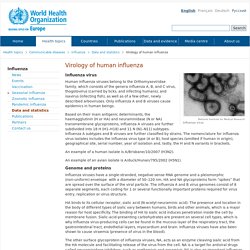
Only influenza A and B viruses cause epidemics in human beings. Based on their main antigenic determinants, the haemagglutinin (H or HA) and neuraminidase (N or NA) transmembrane glycoproteins, influenza A viruses are further subdivided into 18 H (H1–H18) and 11 N (N1–N11) subtypes. Influenza A subtypes and B viruses are further classified by strains. Flu Causes: Types of Influenza Viruses, Contagious Transmission, and More. Want to avoid getting the flu?
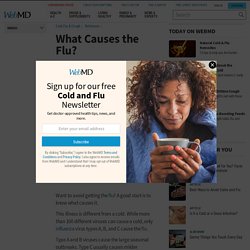
A good start is to know what causes it. This illness is different from a cold. Understanding Influenza Viruses. Ebola: Symptoms, treatment, and causes. Ebola virus disease is a serious, often fatal condition in humans and nonhuman primates.
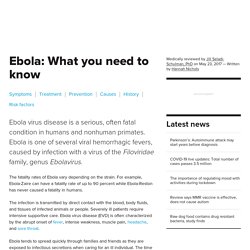
Ebola is one of several viral hemorrhagic fevers, caused by infection with a virus of the Filoviridae family, genus Ebolavirus. The fatality rates of Ebola vary depending on the strain. For example, Ebola-Zaire can have a fatality rate of up to 90 percent while Ebola-Reston has never caused a fatality in humans. Ebola virus disease. The Ebola virus causes an acute, serious illness which is often fatal if untreated. EVD first appeared in 1976 in 2 simultaneous outbreaks, one in what is now Nzara, South Sudan, and the other in Yambuku, DRC. The latter occurred in a village near the Ebola River, from which the disease takes its name. The 2014–2016 outbreak in West Africa was the largest Ebola outbreak since the virus was first discovered in 1976.
The outbreak started in Guinea and then moved across land borders to Sierra Leone and Liberia. The current 2018-2019 outbreak in eastern DRC is highly complex, with insecurity adversely affecting public health response activities. What is Ebola Virus Disease? Ebola virus disease (EVD) is a deadly disease with occasional outbreaks that occur primarily on the African continent.
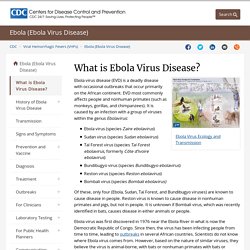
EVD most commonly affects people and nonhuman primates (such as monkeys, gorillas, and chimpanzees). It is caused by an infection with a group of viruses within the genus Ebolavirus: